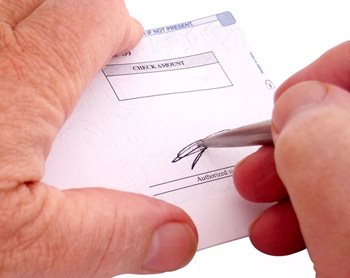
Chapter 7 Bankruptcy Information:
A Chapter 7 bankruptcy filing is a liquidation plan; a debtor who files for a Chapter 7 will sell his or her nonexempt property and distribute the proceeds to underlying creditors. Therefore, a
Chapter 7 Bankruptcy case does not entail the filing of the repayment plans common in a Chapter 13 filing. Instead, a bankruptcy trustee will gather and sell the debtor (individual filing for a Chapter 7 bankruptcy) in accordance with the regulations and provisions expressed in Bankruptcy Code.
A portion of the debtor’s property may be subject to mortgages and liens that pledge the property to various creditors. Furthermore, important Chapter 7 bankruptcy information states that the Bankruptcy Code will enable the debtor to maintain certain “exempt” property; however, a trustee is required to liquidate the debtor’s enduring assets. Accordingly, those who file for Chapter 7 Bankruptcy should acknowledge the fact that the filing of a petition under Chapter 7 may result in the forfeiture or loss of property.
Chapter 7 Bankruptcy Information: Eligibility Requirements
The most fundamental Chapter 7 Bankruptcy information revolves around eligibility requirements. The presence of a debt portfolio is not sufficient to engage in a Chapter 7 filing; an individual or
business entity must satisfy the eligibility requirements affirmed in Bankruptcy Code.
To qualify for relief under a Chapter 7 filing, the debtor may be a corporation, a partnership (and other business entities) or an individual. Chapter 7 bankruptcy information concerning eligibility requirements are subject to the means test described for an individual debtor; relief is offered under Chapter 7 regardless of the debtor’s debt amounts or whether the individual is insolvent or solvent.
Chapter 7 Bankruptcy information regarding eligibility requirements states that the filing’s primary purpose is to discharge certain debts to award an honest worker or individual a “fresh start.” In a Chapter 7 filing, the debtor has no liability for the discharged debts; however, discharge is only available to individual filers, and not corporations or partnerships.
Chapter 7 Bankruptcy Information: The Process
A Chapter 7 filing begins with the filing of a petition; an individual or business entity must file the petition with the bankruptcy court that serves the area where the individual lives or where the business is organized or operates out of.
In addition to the filing of a petition, the debtor must file the following documents with the court:
• Chapter 7 Bankruptcy information states that the debtor must file a schedule of liabilities and assets
• The debtor must provide a schedule of expenditures and current income
•
The debtor must provide a statement of financial affairs and a
document that elucidates the debtor’s schedule of unexpired leases and executor contracts
•
Debtors must also deliver the assigned trustee with a copy of the tax year return for the most recent tax year, as well as returns filed during the
case.
• Individual debtors with an imbalanced amount of consumer debts (i.e. credit card debt makes up the majority of the individual’s debt profile) are required to file additional documentation according to Chapter 7 bankruptcy information.
After the debtor files the above documentation, a court fee of $245 (plus an additional $39 for administrative costs) is required. This fee may be waived if the debtor’s income is below 150% of the poverty level and the debtor is deemed unable to satisfy the court fees.
In order to satisfy the court’s filing requirements, Chapter 7 Bankruptcy information states that the debtor, along with the petition, schedules and statement of financial affairs, the debtor must provide the following documentation to the court system:
• A detailed list of all creditors, amounts owed and the nature of each claim
• The amount, source and frequency of the debtor’s income
• A list of the debtor’s property
• A list of the debtor’s monthly expenses
When this information is supplied, the bankruptcy court will appoint an impartial case trustee to administer the filing and liquidate the debtor’s nonexempt assets. The trustee will liquidate the assets in a manner that maximizes the return to the listed unsecured creditors.
What is Chapter 7 Bankruptcy?
1. Chapter 7 Bankruptcy is a financial program that individuals or businesses enter into when facing mounting debts or economic hardships.
2. Chapter 7 Bankruptcy is a fundamental aspect of the Title 11 of the United States Bankruptcy Code. The specific program, according to the Bankruptcy laws of the United States, governs the process of liquidation.
3. When an individual or business files for Chapter 7 bankruptcy, they will go through a liquidation process (selling their assets for cash) to help pay off their accrued debts. The process, although undesirable, is an effective way to clear off debts and, in essence, obtain a “fresh start.”
4. Chapter 7 Bankruptcy is a unique and popular form of bankruptcy in which a debtor individual or business who faces insurmountable debts liquidates their assets. The creditors, in line with their financial standing, then collect the proceeds of the liquidation process. Following the liquidation process, the majority of the debts are discharged, offering a fresh start to the individual or entity filing for Chapter 7 Bankruptcy.
Legal Process for Filing for Chapter 7 Bankruptcy
1. To initiate the Chapter 7 process, the individual or entity in question must file a number of documents and papers with their local Bankruptcy Court.
2. In order to receive a valid standing, the individual or entity must demonstrate the inability to file for reorganization or a repayment plan. Chapter 7 Bankruptcy filing does not offer the debtor the ability to pay off their debts through incremental payments, but rather, a liquidation process where the debtor’s assets are held against their debts.
3. As a result of the liquidation process attached to Chapter 7 Bankruptcy, the individual or entity must provide to the court a comprehensive list of all assets suitable for liquidation.
4. Upon receiving the list of assets, the court will review the information and determine if the debtor’s liquidated assets are substantial enough to fulfill their debt obligations.
5. After approval, the filing party must schedule a meeting with their creditors to discuss the assets that will be awarded to them. During this meeting, creditors may agree to take partial payments or may demand the full satisfaction of the debts owed to them.
6. Furthermore, a review of all the debts obtained will be reviewed. If the court finds that the debts were fraudulently obtained or were attached to such items as student loans, the filing party may be relieved of their obligation.
7. A lengthy procedure (typically 4-6 months) is required to initiate and subsequently complete a Chapter 7 filing.
Legal Aid Associated with Chapter 7 Bankruptcies
1. As a result of the program’s importance and the various laws which regulate the filing of a Chapter 7 Bankruptcy, it is strongly suggested that an individual engage the services of a bankruptcy attorney or legal professional to facilitate their claim.
2. Bankruptcy attorneys will deal with the local court systems and streamline the process of liquidation. A bankruptcy attorney (varies on a case by case basis) will also facilitate the delivery process of the liquidated assets to the respective creditors.





















